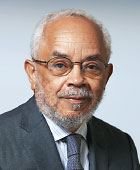Military-type children’s play was common in my long-ago Caribbean village. We imitated British-style army drills in my parents’ yard, parading up and down with a designated leader. He would bring us to a halt, then present us to an officer who would carry out an inspection of our imagined uniforms. We knew somehow that military rank brought status and privilege, so no one wanted to be a private. We solved equity problems by rotating rank among members of the group, using caps from sweet-drink bottles to symbolize rank. We separated the cork from the metal covers and reinstalled them on the sleeve or shoulder of someone’s shirt. We placed the round piece of cork on the inside of the cloth and into the cap that was on the outside. That way, everything stayed in place. Sleeve insignia indicated noncommissioned rank. Those with shoulder insignia had commissioned officer status, which mandated a salute before being addressed.
Some of us had observed this marching at school among the older boys (and later, girls) who were members of the school’s cadet corps. The upperclassmen were dressed in their cadet uniforms of khaki short pants and shirts, canvas belts with brass buckles, and berets. They marched to the cadence established by a corporal or sergeant putting down the “left, right … left, right … left, right, left.” We saw the drills, too, on certain occasions at the Garrison Savannah, that wide open space that was venue for special convocations. Members of the Barbados regiment and other paramilitary groups looked sharp in their crisp uniforms and polished boots. There could not have been even one young boy who did not at these moments dream of being a soldier. Later, I would see this form of military performance in Edinburgh, Scotland, at the famous Royal Military Tattoo. A similar hypnotic event takes place on Bastille Day (July 14) in Paris on the entrancing Champs Elysées when every branch of military and police march in splendor to public adoration. I believe that small and big countries put on these occasional displays to maintain this awe-inspiring connection between citizen and soldier. Military dress carries a message of sophisticated commitment to community citizenship.
I was drafted into the U.S. Army in 1964, a time when many young men contemplated the probability of ending up in South Vietnam in an unpopular war. I was assigned to a small public health unit and headed for Saigon. I was seconded to the Pasteur Institute to participate in research on bubonic plague, identifying rodent vectors carrying the fleas that spread the bacteria. I usually wore civilian clothes, but often traveled in military vehicles and ate lunch in a building designated as a restaurant catering to the military. Vietcong occasionally lobbed grenades at such structures. They also tried to attach explosives to the underside of vehicles. It was a strange sort of life, different from the one led by friends who were seeing action in the countryside. Nevertheless, the unpredictability of attacks in the city, even though less frequent than elsewhere, still provoked an unpleasant and persistent anxiety.
I sat around on evenings in a community bungalow where I lived, listening to music from the Armed Forces radio station, chatting with mates, and writing letters. Irene Reid was one of my favorites then, a down-home jazz singer who kept my mind off war. Her song “That Bitter Earth” repeated “that bitter earth may not be that bitter after all.” She offered some hope and asked, “What good is love that no one shares?” I wrapped my arms around my shoulders and prayed I would get back home safe. My other virtual soulmate was Etta James (“At last, my love has come along”). The music and quietness provided some comfort, even as they exaggerated the distance from home and made the risks to life more palpable.
I attended Sunday service in town at a church run by American missionaries. I joined the choir and was delighted to participate in the choral side of worship. Looking from the chancel area toward the congregation, I still see that man to my far left at the rear of the church sitting on a pile of hymnals. It took me a while to realize that he was on the lookout for any intruders seeking to lob a grenade or, worse still, penetrate the precincts of the church to do us harm. The pastor prayed so earnestly, seemingly oblivious to the war. I would look up and ask God whose side He was on. And I toyed with the idea of asking Him how He responded to the entreaties from the Vietnamese. I tried hard to comprehend the explanations offered by politicians back home to justify the killing and injuring. I never understood, after the departure of the French from Indochina, how the U.S. expected to win.
Ultimately, the parade ground, with its performative elements, and the war zone defy comparison. The aesthetic aspects of military dress uniforms and balletic parade-ground exercises are dramatic presentations focused on cadence, rhythm, and collective symmetry. Even when fighter planes fly overhead as a part of the presentation, they are in tight formation, representing some geometric figure finely held in check, leaving trails of multicolored smoke. No one dies on the parade ground. The horror show that is war takes place in another theater, displaying unspeakable suffering and unbridled hatred. The audience leaves the drama empty, pained, and marked by the performance. Others stay on the scene, permanently, as silent witnesses. ■

